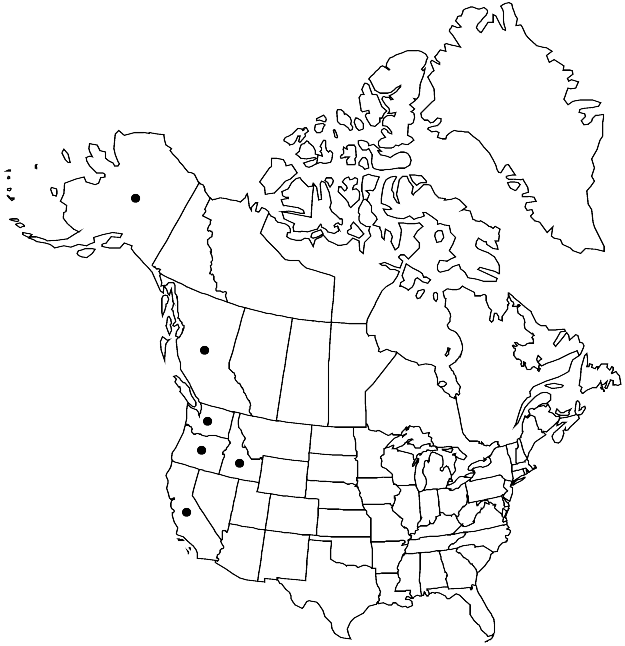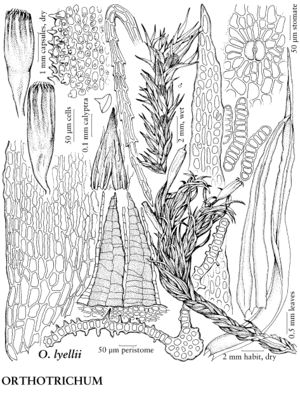Difference between revisions of "Orthotrichum lyellii"
Muscol. Brit., 76, plate 22 [upper left]. 1818.
imported>Volume Importer |
imported>Volume Importer |
||
| Line 88: | Line 88: | ||
|publication year=1818 | |publication year=1818 | ||
|special status=Illustrated | |special status=Illustrated | ||
| − | |source xml=https:// | + | |source xml=https://bitbucket.org/aafc-mbb/fna-data-curation/src/2e0870ddd59836b60bcf96646a41e87ea5a5943a/coarse_grained_fna_xml/V28/V28_78.xml |
|genus=Orthotrichum | |genus=Orthotrichum | ||
|species=Orthotrichum lyellii | |species=Orthotrichum lyellii | ||
Latest revision as of 21:38, 5 November 2020
Plants to 13 cm. Stem leaves erect-spreading to loosely erect, ± contorted when dry, lanceolate to linear-lanceolate, 2.5–6.5 mm; margins plane, entire; apex narrowly acute to acuminate; basal laminal cells narrowly elongate, walls thick, ± nodose; distal cells 7–14 µm, 1-stratose, papillae 1–3 per cell, conic, large. Specialized asexual reproduction by gemmae on leaves. Sexual condition dioicous. Seta 0.8–2.7 mm. Capsule immersed, emergent, or rarely exserted, oblong-cylindric, 1.7–3 mm, strongly 8-ribbed to mid capsule or entire length; stomata superficial; peristome double; prostome absent; exostome teeth 16, reflexed-recurved, acuminate, densely papillose; endostome segments 16, well developed, usually present when capsule is old and dry, thick, stout, of 2 rows of cells, narrower than exostome teeth, yellowish brown, coarsely papillose. Calyptra conic-oblong, smooth, very hairy, hairs papillose. Spores 18–35 µm.
Habitat: Trees, covering trunks to 10 m, boulders
Elevation: low to moderate elevations (10-1000 m)
Distribution

B.C., Alaska, Calif., Idaho, Oreg., Wash., Mexico (Baja California), Europe, n Africa.
Discussion
Orthotrichum lyellii is easily distinguished from all other species of the genus by its dioicous sexual condition, the male plants being slightly smaller and having numerous and conspicuous perigonia. In addition, the 16, slenderly acuminate, whitish exostome teeth and 16 endostome segments are characteristic. Sterile plants usually have abundant laminal gemmae.
Selected References
None.
